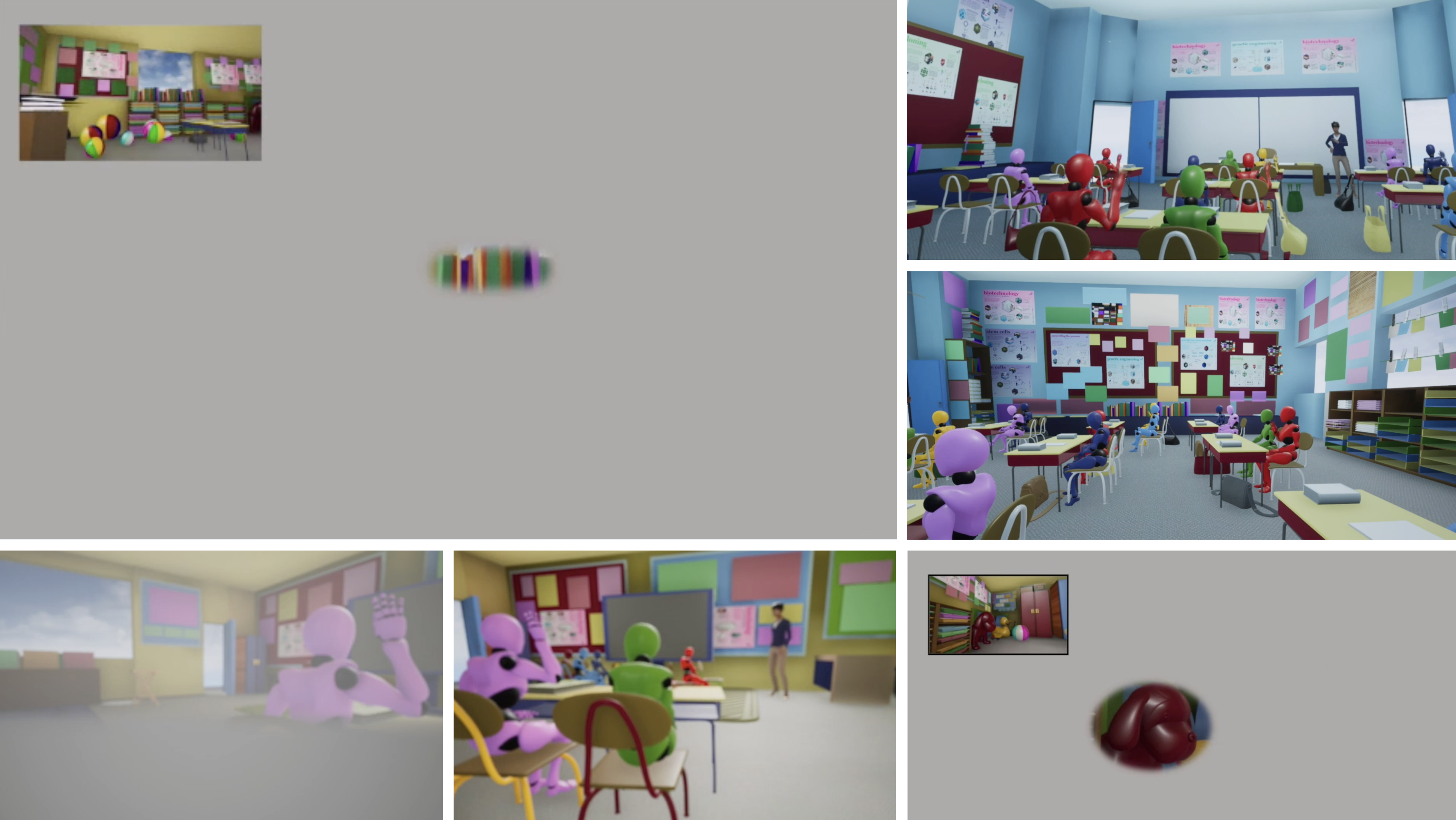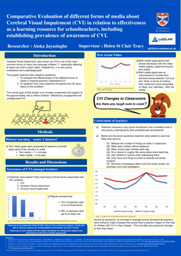Understanding what teachers know, and how they can most effectively learn, about Cerebral Visual Impairment: Reflections on my maiden voyage into medical research.

How my project came to be.
Out of ignorance came an interest in eyes. I am lucky enough to say I have never had any issues with my vision, and it was something I took massively for granted. Learning my grandfather had suffered from age-related macular degeneration, and hearing how he was only able to see parts of the world that lay in front of him, was something I could not come to terms with or even begin to imagine. There began my interest in sight and vision.
When I came across the opportunity of the Laidlaw Leadership and Research programme, I knew this could be my chance to not only put my leadership skills to the test but do research in vision and thus began a search for a project. After contacting many people in search of a supervisor, I met my supervisor Helen St Clair Tracy and was presented with the incredible opportunity to do a project on Cerebral Visual Impairment.
My research project.
Cerebral Visual Impairment, also commonly referred to as CVI, is the most common form of visual impairment amongst children in economically developed countries 1,2,4 with research showing that it affects at least one child in each class5. One study found that 80% of children affected had difficulties in school5 yet despite the seriousness of the condition, it is poorly understood and underdiagnosed.
I am still on my journey to explaining and truly understanding CVI, as what a child with CVI experiences varies greatly. It is due to the complex nature of CVI that makes understanding it quite difficult.
CVI has a significant impact on learning of a child due to impairments in visual processing and attention3,5 and it is because of this that my research project aims to figure out the most effective way to help teachers understand what a child with CVI experiences. This is achieved through comparing two forms of media in terms of their effectiveness as a learning resource for school teachers. My project also aims to establish the prevalence of awareness of CVI amongst teachers throughout the UK.
I am collecting data through questionnaires on Qualtrics and plan to analyse my findings once the research period is over. The outcomes of my research will help to enable the development of more targeted teaching tools for this complex condition, to promote the understanding of CVI. My findings will in turn help guide strategies and national policies to identify and support the nearly half a million children* with undiagnosed, unsupported CVI, who are struggling at school in the UK.

My experience so far.
My research project is heavily dependent on getting teachers to fill out my questionnaire, however little did I know that this would be a very intense process.
Attempting to do research in schools has been an incredibly eye-opening experience. I have learnt that every school, every county, and every nation have their own way of doing things. One of the biggest trials I faced was trying to get my survey out, it required a very tedious process of getting permissions and authorisations from local authorities and headteachers. I have been learning a lot about school systems throughout the UK and have found that there is truly more to it than meets the eye!
Organisation and optimism have been my best friends through this process. With the support of my supervisor, I took to making copious amounts of excel spreadsheets to keep track of emails and progress, I found this to be incredibly helpful. I have also found that keeping a daily log of everyday tasks really helped me not only when planning my workday but as I start looking back for analysis.
What have I learnt?
By talking with my fellow Laidlaw scholars and reflecting on messages from Laidlaw talks that we have had throughout the summer, I have been able to cultivate and develop practices and skills that I will continue to put into practice throughout my future career in medicine and academics.
The biggest of these being my skill in time-management that has been severely put to the test this summer. Doing this research project has meant that I am the captain of my own ship. I found it quite challenging at the beginning of the research period to manage the many aspects of my project. I found accountability to be very useful in tackling this, letting my supervisor know of my weekly goals really helped me create structure to my plans as I had goals to meet before our weekly meetings. I also learned that organisation really is key.
All in all, the past few weeks have really allowed me to understand self-leadership. I have had to put into practice planning my days, meeting my goals, and making changes along the way. I have learned so much about not only myself in a professional setting but about the world of research.
A word of advice from my supervisor that as time went on, I have truly been able to understand is how things rarely go 100% to plan and how it doesn’t necessarily mean everything is going wrong, it’s just all part of the process. I am not a very spontaneous person by nature, so it came to me as a surprise that I have been enjoying this aspect of my research project the most. I feel it truly adds to the experience and has put me in a position to grow as an individual by learning more about a field that I am truly passionate about as well as learning more about what I am capable of.
I would like to thank my supervisor Helen St Clair Tracy for her continuous support and guidance. I would also like to thank Lord Laidlaw and the Laidlaw foundation for this incredible opportunity.
References
- Fazzi, E., Signorini, S. G., Bova, S. M., La Piana, R., Ondei, P., Bertone, C., ... & Bianchi, P. E. (2007). Spectrum of visual disorders in children with cerebral visual impairment. Journal of child neurology, 22(3), 294-301.
- Macintyre-Béon, C., Young, D., Dutton, G. N., Mitchell, K., Simpson, J., Loffler, G., ... & Hamilton, R. (2013). Cerebral visual dysfunction in prematurely born children attending mainstream school. Documenta Ophthalmologica, 127, 89-102.
- Martin, M. J., Santos-Lozano, A., Martín-Hernández, J., López-Miguel, A., Maldonado, M. J., Baladrón, C., Bauer, C. M., & Merabet, L. B. (2016). Cerebral versus Ocular Visual Impairment: The Impact on Developmental Neuroplasticity. Frontiers in Psychology, 1. https://doi.org/10.3389/fpsyg.2016.01958
- Ravenscroft, J., St Clair Tracy, H., & Blaikie, A. (2021). Cerebral Visual Impairment on the Web: An Exploration of an Educational Web Resource as a Bridge to Public Understanding. Frontiers in Communication, 1. https://doi.org/10.3389/fcomm.2021.727230
- Williams, C., Pease, A., Warnes, P., Harrison, S., Pilon, F., Hyvarinen, L., West, S., Self, J., Ferris, J. and (2021), Cerebral visual impairment-related vision problems in primary school children: a cross-sectional survey. Dev Med Child Neurol, 685-688. https://doi.org/10.1111/dmcn.14819
Image: CVI-SIM, University of St Andrews
*Williams (2021) found 3.4% of children had visual difficulties associated with CVI. Children make up around 20% of a population. The UK population is 67,330,000. CVI in most cases from birth, equating to 458,000 children in UK.




Please sign in
If you are a registered user on Laidlaw Scholars Network, please sign in